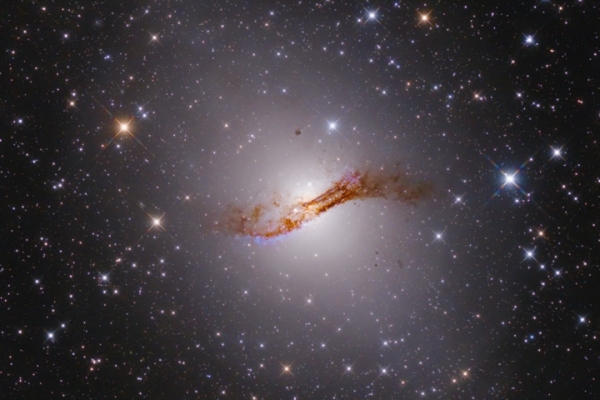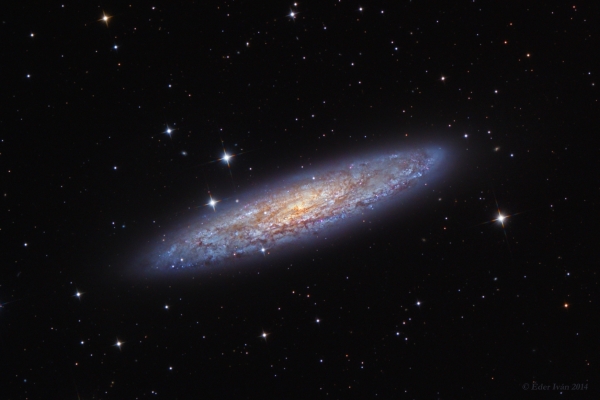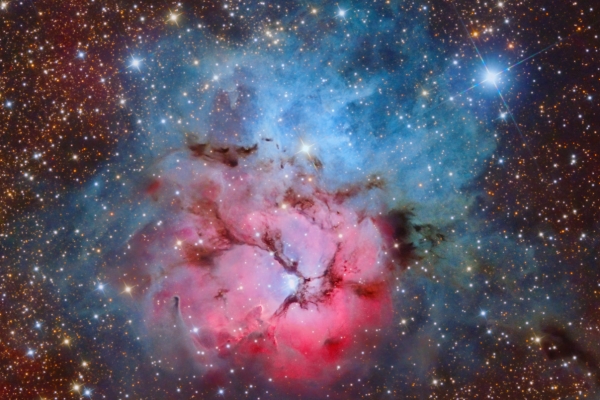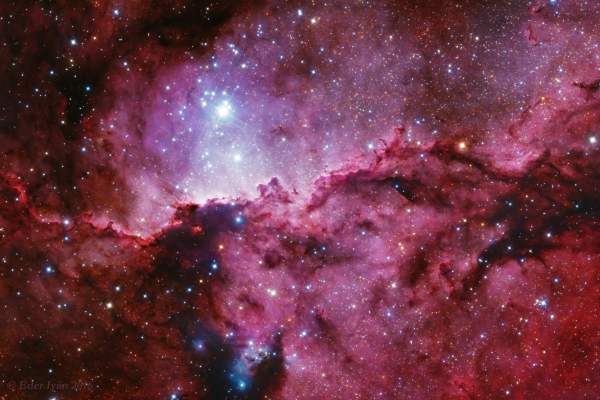The Antennae Galaxies (NGC 4038-39)
NGC 4038-39, in Corvus
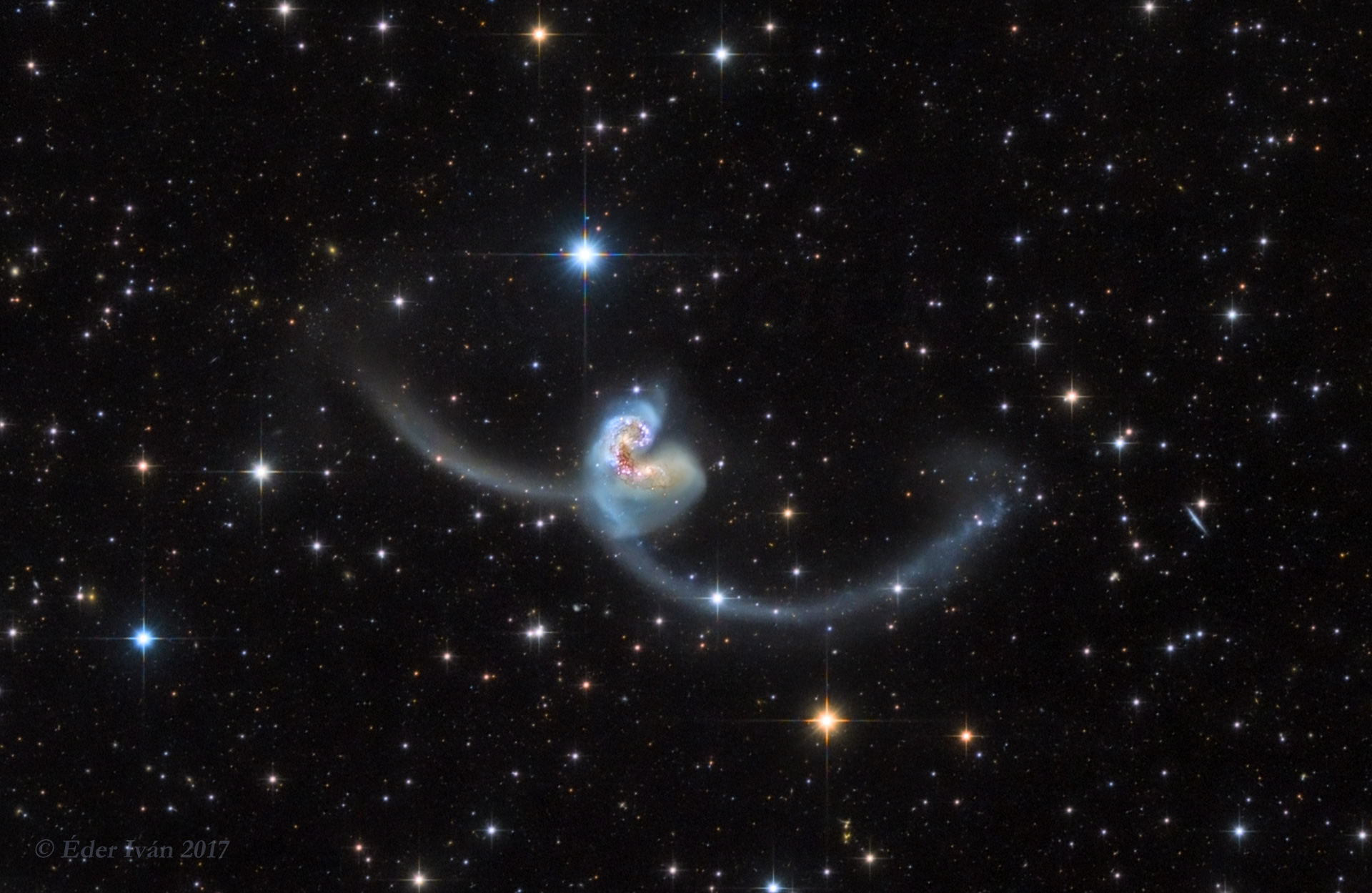
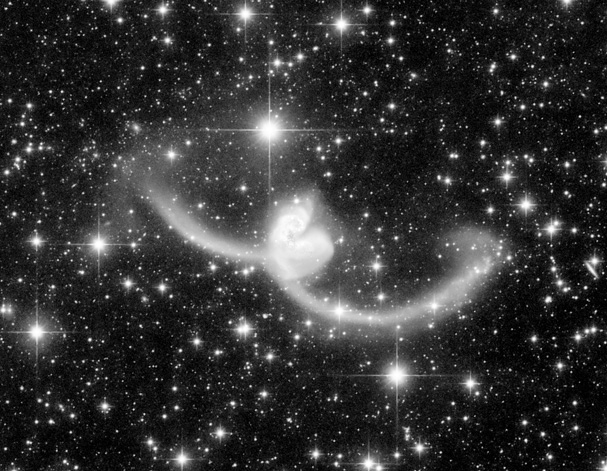
The Antennae Galaxies (NGC 4038/NGC 4039) are a pair of interacting galaxies, locating in the constellation Corvus. They were discovered by William Herschel in 1785. They are currently going through a starburst phase, in which the collision of clouds of gas and dust, with entangled magnetic fields, causes rapid star formation.
Galaxy interaction
About 1.2 billion years ago, the Antennae were two separate galaxies. NGC 4038 was a barred spiral galaxy and NGC 4039 was a spiral galaxy. Before the galaxies collided, NGC 4039 was larger than NGC 4038. 900 million years ago, the Antennae began to approach one another, looking similar to NGC 2207 and IC 2163. 600 million years ago, the Antennae passed through each other, looking like the Mice Galaxies. 300 million years ago, the Antennae's stars began to be released from both galaxies. Today the two streamers of ejected stars extend far beyond the original galaxies, resulting in the antennae shape. Within 400 million years, the Antennae's nuclei will collide and become a single core with stars, gas, and dust around it. Observations and simulations of colliding galaxies suggest that the Antennae Galaxies will eventually form an elliptical galaxy. (wiki)
Image details
- Instrument:
- 200/750 Newton, Paracorr Type-II (860mm effective focal length)
- Camera:
- QSI 683 WSG-8 with LRGB filters, and EOS 550D (modified)
- Mount:
- SkyWatcher EQ6 + Boxdörfer DynoStar
- Guiding:
- Off axis, Lacerta-MGen autoguider + Mgen2Maxim
- Exposure time, filters:
- 550D: 10 hours, CCD: 17 hours, 27 hours total
- Location, date:
- Hakos astrofarm, Namibia (1835m); several nights between 2012 and 2016
- Observing conditions:
- Transparency: 9/10, Seeing: 8/10
- Processing:
- ImagesPlus, Registar, Pixinsight LE, Photoshop


